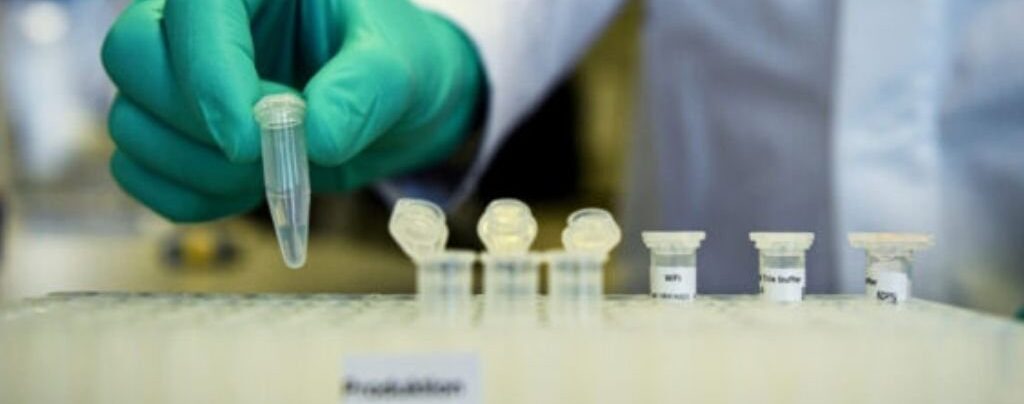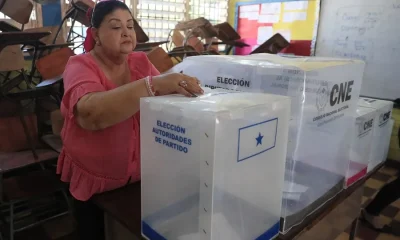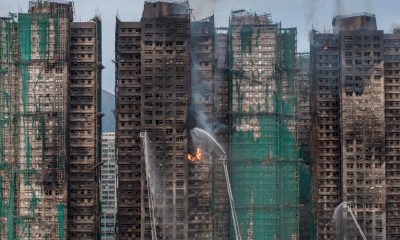International
WHO urges Ukraine to destroy lab pathogens

AFP
The WHO said Friday it has urged Ukraine to destroy any highly dangerous pathogens in its laboratories to avoid the risk of an outbreak as Russian strikes on the country continued.
The World Health Organization said that its remit included the promotion of biosecurity at laboratories, to prevent the accidental or deliberate release of pathogens.
“As part of this work, WHO has strongly recommended to the Ministry of Health in Ukraine and other responsible bodies to destroy high-threat pathogens to prevent any potential spills,” the UN health agency said.
Aware of the concern that the recommendation could create, after Ukraine’s main civil nuclear power plant was caught up in the Russian invasion, the WHO stressed the broader context of years of collaboration with the Ukrainian authorities to improve lab safety.
“WHO routinely assists member states in improving their public health capacities, including by facilitating improved safety and security of laboratories holding samples of pathogens of public health concern,” the organisation said.
“WHO’s country office in Ukraine has been working for several years with the Ministry of Health and other partners, including other WHO member states, to support the enhancing of biosafety and biosecurity of labs, as well as the capacity of lab personnel, in particular to respond to the Covid-19 pandemic.”
In its general recommendations on laboratory safety, the WHO emphasises a risk-based evaluation, spokesman Tarik Jasarevic told reporters in Geneva via video-link from Ukraine.
“Labs should always look into and assess the situation they are in, to ensure that in the case of a threat, there is a way to dispose safely of pathogens that normally are in all these countries for public health purposes, and to avoid any accidental spill,” he said.
“It is a part of us providing public health advice to every country to try to ensure that there is a minimised risk of any harm to population because of any possible accidental leak of pathogens.”
Questioned by AFP, the WHO did not provide a list of laboratories in Ukraine, nor indicate their level of biosecurity or explain what pathogens they held.
Jasarevic could not say whether any laboratory affected by these recommendations was in an area actively being bombarded or occupied by Russian troops.
International
El Chapo’s son Joaquín Guzmán López pleads guilty to U.S. drug trafficking charges

Joaquín Guzmán López, one of the sons of notorious Mexican drug lord Joaquín “El Chapo” Guzmán, pleaded guilty on Monday to drug trafficking charges in a U.S. court, months after his brother Ovidio reached a similar plea agreement, according to local media reports.
The defendant appeared before a federal court in Chicago early Monday afternoon and changed his previous plea in the case, the Chicago Tribune reported. U.S. authorities accuse him of forming, together with his three brothers, the cartel faction known as “Los Chapitos.”
The group is believed to have continued the operations of El Chapo, who has been serving a life sentence in the United States since 2019.
Guzmán López, 39, was arrested after landing in Texas in a small aircraft alongside cartel co-founder Ismael “El Mayo” Zambada.
International
Venezuela authorizes return flights as U.S. continues deportations amid rising tensions

The arrival of U.S. aircraft carrying undocumented Venezuelan migrants continued regularly despite rising tensions between Washington and Caracas over President Donald Trump’s military deployment in the Caribbean.
Trump maintains that the deployment is part of an anti-narcotics operation, while Venezuelan President Nicolás Maduro insists the true objective is to remove him from power and seize the nation’s oil resources.
Venezuela’s aviation authority has “received a request from the United States government to resume repatriation flights for Venezuelan migrants from that country to Venezuela,” the Ministry of Transportation said in a statement .
“Under the instructions of President Nicolás Maduro, authorization has been granted for these aircraft to enter our airspace,” it added.
Caracas will permit two Eastern Airlines flights to land on Wednesday and Friday.
Migration remains one of the Trump administration’s flagship issues. On Monday, the U.S. president held a meeting with his National Security Council to discuss the situation in Venezuela, a day after confirming he had spoken with Maduro by phone, without offering further details.
According to the Venezuelan government, roughly 75 deportation flights have been carried out this year, returning at least 13,956 Venezuelans from the United States.
International
20,000 rounds stolen from german army after driver leaves cargo unattended

The German army confirmed the theft of a shipment of ammunition that occurred a week ago while it was being transported by a civilian delivery driver, a military spokesperson told AFP, confirming earlier media reports.
According to Der Spiegel and the regional broadcaster MDR, around 20,000 rounds of ammunition were stolen from an unguarded parking lot near Magdeburg, in eastern Germany, while the driver was asleep in a nearby hotel. No information has been released regarding the identity of the suspects, and the military declined to specify the exact type or amount of ammunition taken.
Authorities have also not indicated how the perpetrators knew the cargo would be left unattended.
“The theft was discovered upon delivery at the barracks,” the German army spokesperson said.
A police spokeswoman confirmed to AFP that an investigation has been opened but refused to provide further details “for tactical reasons.”
Sources close to the German military, cited by Der Spiegel, believe it is unlikely the theft was a coincidence. They suspect the thieves waited for the driver to stop for the night before striking.
Der Spiegel also reported that the Defense Ministry normally requires two drivers for this type of transport to ensure the cargo is constantly monitored. However, in this case only one driver was assigned, meaning the civilian transport company failed to comply with the security protocols.
-

 Central America4 days ago
Central America4 days agoTrump Pardons Former Honduran President Hernández and Warns of Aid Cuts Ahead of Election
-

 Central America2 days ago
Central America2 days agoHonduras Extends Voting by One Hour Amid High Turnout, CNE Announces
-

 International1 day ago
International1 day agoHong Kong police arrest 13 over deadly high-rise fire that killed 151
-

 Central America3 days ago
Central America3 days agoHonduras’ China–Taiwan Future Hinges on Sunday’s Presidential Election
-

 International4 days ago
International4 days agoMeta Says Russia Seeks to Ban WhatsApp for Defending Secure Communication
-

 International1 day ago
International1 day agoSri Lanka and Indonesia deploy military as deadly asian floods kill over 1,000
-

 International1 day ago
International1 day agoTrump says asylum decision freeze will remain in place “for a long time”
-

 International1 day ago
International1 day agoChile enters runoff campaign with Kast leading and Jara seeking a last-minute comeback
-

 International6 hours ago
International6 hours ago20,000 rounds stolen from german army after driver leaves cargo unattended
-

 International6 hours ago
International6 hours agoVenezuela authorizes return flights as U.S. continues deportations amid rising tensions
-

 International6 hours ago
International6 hours agoTrump convenes National Security Council as U.S.–Venezuela tensions intensify
-

 International6 hours ago
International6 hours agoEl Chapo’s son Joaquín Guzmán López pleads guilty to U.S. drug trafficking charges






























